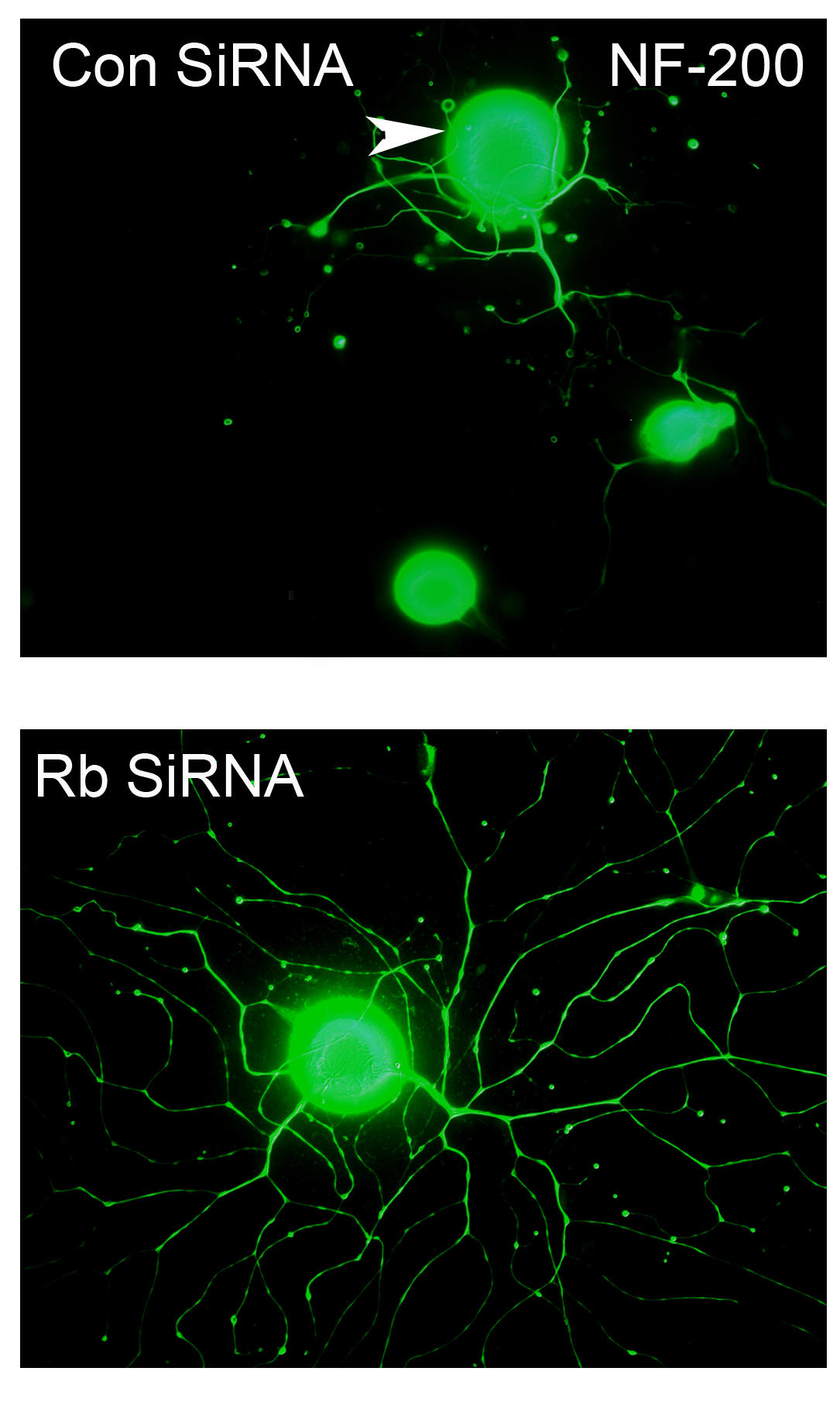April 22, 2014
Scientists discover a new way to enhance nerve growth following injury

New research published today by researchers at the University of Calgary’s Hotchkiss Brain Institute uncovers a mechanism to promote growth in damaged nerve cells.
Dr. Doug Zochodne, a professor in the Department of Clinical Neurosciences, and his team have discovered a key molecule that directly regulates nerve cell growth in the damaged nervous system. This surprising discovery was published in the prestigious journal Nature Communications, with lead authors Kim Christie and Anand Krishnan.
“We have discovered that a protein called Retinoblastoma (Rb) is present in adult neurons,” explains Zochodne. “This protein appears to normally act as a brake – preventing nerve growth. What we have shown is that by inactivating Rb, we can release the brake and coax nerves to grow much faster.”
Clues from cancer
Zochodne and his team decided to look for Rb in nerve cells because of its known role in regulating cell growth elsewhere in the body.
“We know that cancer is characterized by excessive cell growth and we also know that Rb is often functioning abnormally in cancer,” says Zochodne. “So if cancer is able to release this brake and increase cell growth, we thought we’d try to mimic this same action in nerve cells and encourage growth where we want it.”
The key to this methodology, as Zochodne explains, is shutting down the brake for a very short, controlled period of time in order to avoid adverse effects such as excessive cell growth that could lead to cancer.
“In our tests, we were able to do this for a short amount of time,” says Zochodne. “We didn’t see any negative results, which leaves us optimistic that this could one day be used as a safe treatment for patients suffering from nerve damage.”

Adult neurons are seen without (top) and following (below) treatment to inactivate Rb.
Bhagat Singh
Peripheral nerve injuries and illnesses
So far, Zochodne is only investigating this technique in the peripheral nervous system. Peripheral nerves connect the brain and spinal cord to the body and without them, there is no movement or sensation. Peripheral nerve damage can be incredibly debilitating, with patients experiencing symptoms like pain, tingling, numbness or difficulty co-ordinating hands, feet, arms or legs.
As Zochodne explains, “peripheral nerve damage is surprisingly common. We see patients with cut or crushed nerves from motor vehicle accidents and we also see patients that suffer from conditions called neuropathies – a range of disorders that damage peripheral nerves.”
For example, diabetic neuropathy is more common than multiple sclerosis, Parkinson’s disease and amyotrophic lateral sclerosis (ALS) combined. More than half of all diabetics have some form of nerve pain and currently there is no treatment to stop damage or reverse it.
Facility a one-stop shop for translating discoveries from the lab into the clinic
Developing safe and effective therapies for conditions such as peripheral nerve disorders requires the ability to take investigations from cells in a petri dish to patients in a clinic. Zochodne and his team have been able to do that thanks in part to a preclinical facility that opened at the Hotchkiss Brain Institute (HBI) in 2010. The Regeneration Unit in Neurobiology (RUN) was created through a partnership between the HBI, the University of Calgary and the Canada-Alberta Western Economic Partnership Agreement.
“The RUN facility has been critical for this research," says Zochodne. “It provides the resources and cutting-edge equipment that we need all in one facility. RUN has allowed us to take this idea from nerve cells, to animal models and eventually will help us investigate whether it could be a feasible treatment in humans. It’s an incredible asset.”
Zochodne’s study, Enhancing adult nerve regeneration through the knockdown of retinoblastoma protein, was published in the April 22 edition of the journal Nature Communications. This research was funded by the Canadian Institutes of Health Research.
